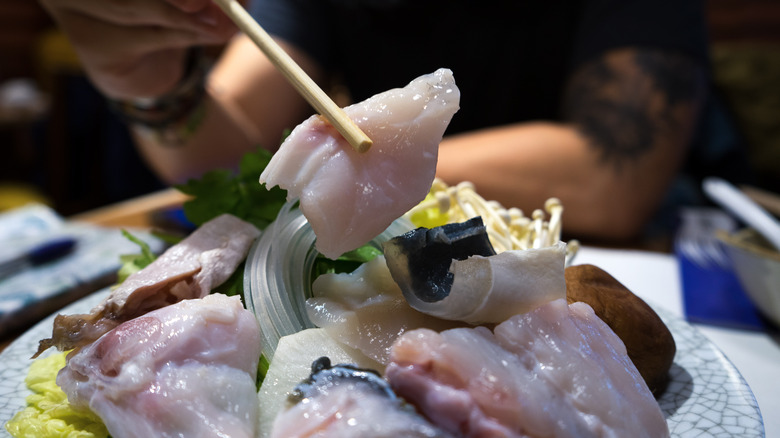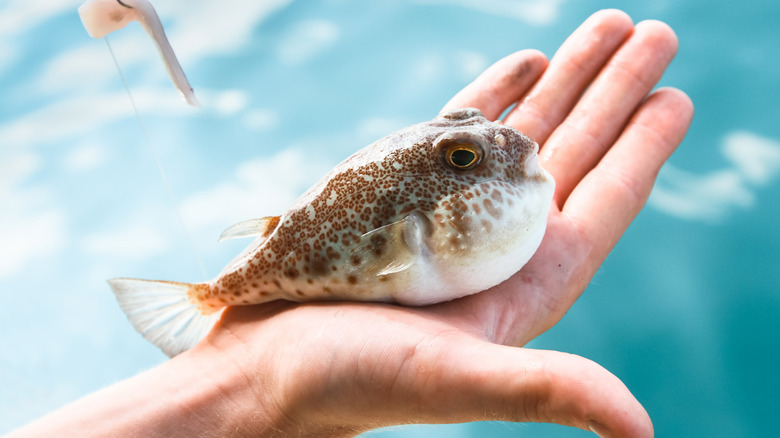Why Only Certain People Can Cook Fugu
When Tokyo's local government considered loosening the restrictions concerning fugu, a type of pufferfish native to Japan, the chefs licensed to prepare the fish were understandably upset. "We worked hard to get the license and had to pass the most difficult exam in Tokyo," Kunio Miura, a chef with over 60 years experience, explained to the BBC. "Under the new rules people will be able to sell fugu after just going to a class and listening for a day. We spent lots of time and money. To get this skill you have to practice by cutting more than a hundred fish and that costs hundreds of thousands of yen."
The reason that Tokyo would have such strict regulations concerning who can prepare fugu for consumption is that pufferfish are by and large poisonous. Twenty-three people had died from fugu between 2000 and 2012, the year in which the BBC article was published. Kobe Jones notes, however, that almost all of these cases were due to people attempting to prepare fugu at home, highlighting why Tokyo would have such restrictions in the first place.
Kobe Jones also shares the deceptively simple-sounding manner one prepares fugu. Cutting around the mouth, you peel the skin off. Wash off the jelly with salt. Then, remove the eyes, gut the fish without puncturing the ovaries or liver, the poisons within which would render the whole fish deadly. Fillet the fish and chop off the head into three pieces to stew later.
Times have changed
As one might imagine, fugu is considered a delicacy. However, the art form described by Kobe Jones may prove obsolete, not because of the regulations imposed by Tokyo's government, but due to recently discovered methods to raise fugu without the poison.
In 2016, the Library of Congress had a guest post on their blog about how Professor Osamu Arakawa of Nagasaki University discovered that the dangers of fugu were due to toxins that entered the fish's body as it consumed starfish and shellfish. When raised in an environment without those toxins, the fugu was safe to eat without highly skilled preparation. Later, Manbo and Saga, a pair of fish product and restaurant companies, filed proposals to exempt themselves from fugu regulations. Other restaurants objected, exclaiming that if they were allowed an exemption, the public may think that fugu, in general, were harmless.
The problem for both restaurants and chefs that pride themselves on preparing fugu is that once knowledge is known, controlling it proves almost impossible. So, it should surprise no one that in 2019 a news release from EFE announced that non-poisonous pufferfish had become a delicacy in Beijing. The restaurants that serve it still need licenses and treat the fish as if it were poisonous, but the new raising methods were what convinced the Chinese government to lift the blanket ban on all pufferfish dishes. Some may feel, though, that such preparation misses the point of eating fugu: tempting death, but not dying.

